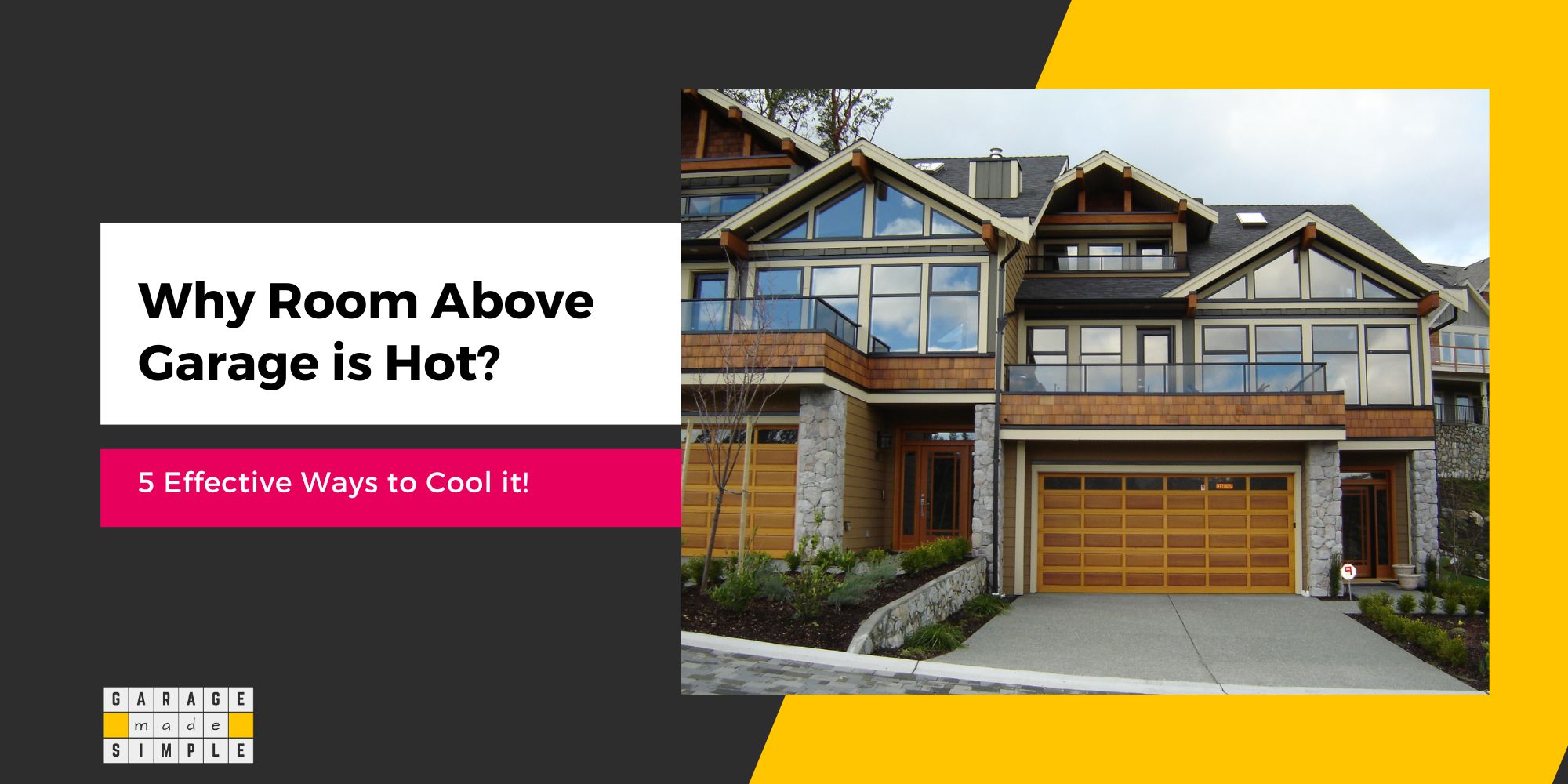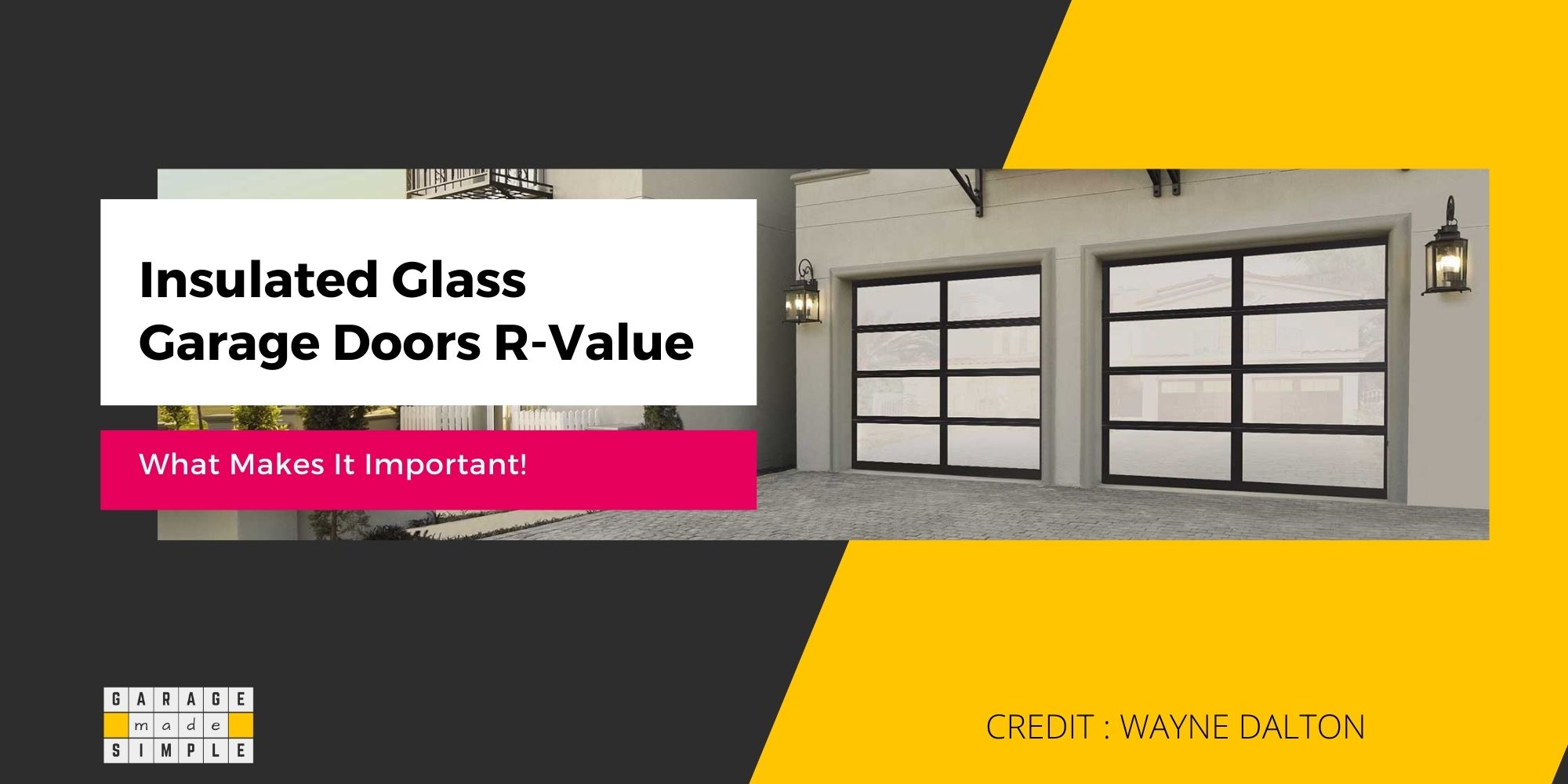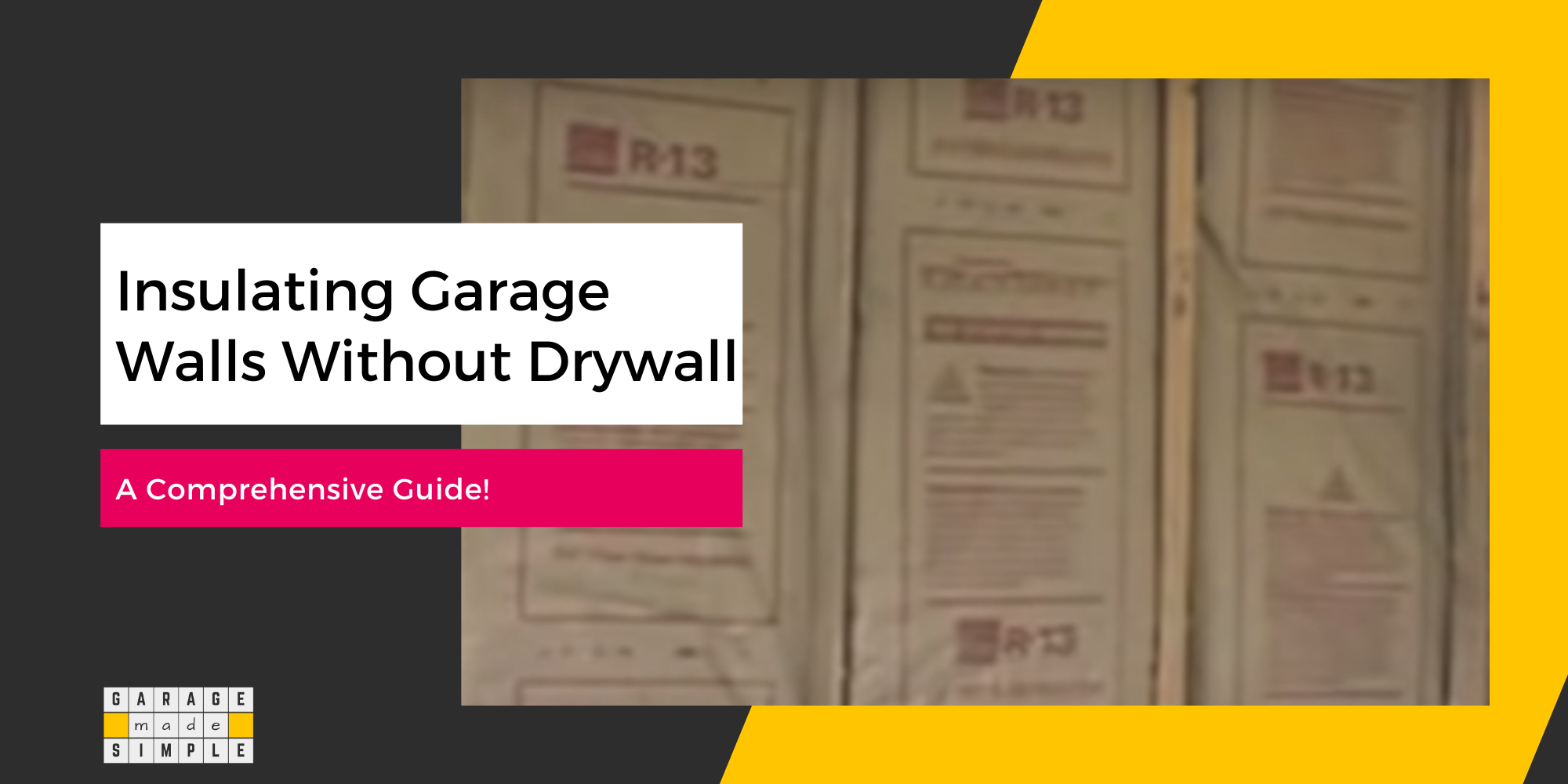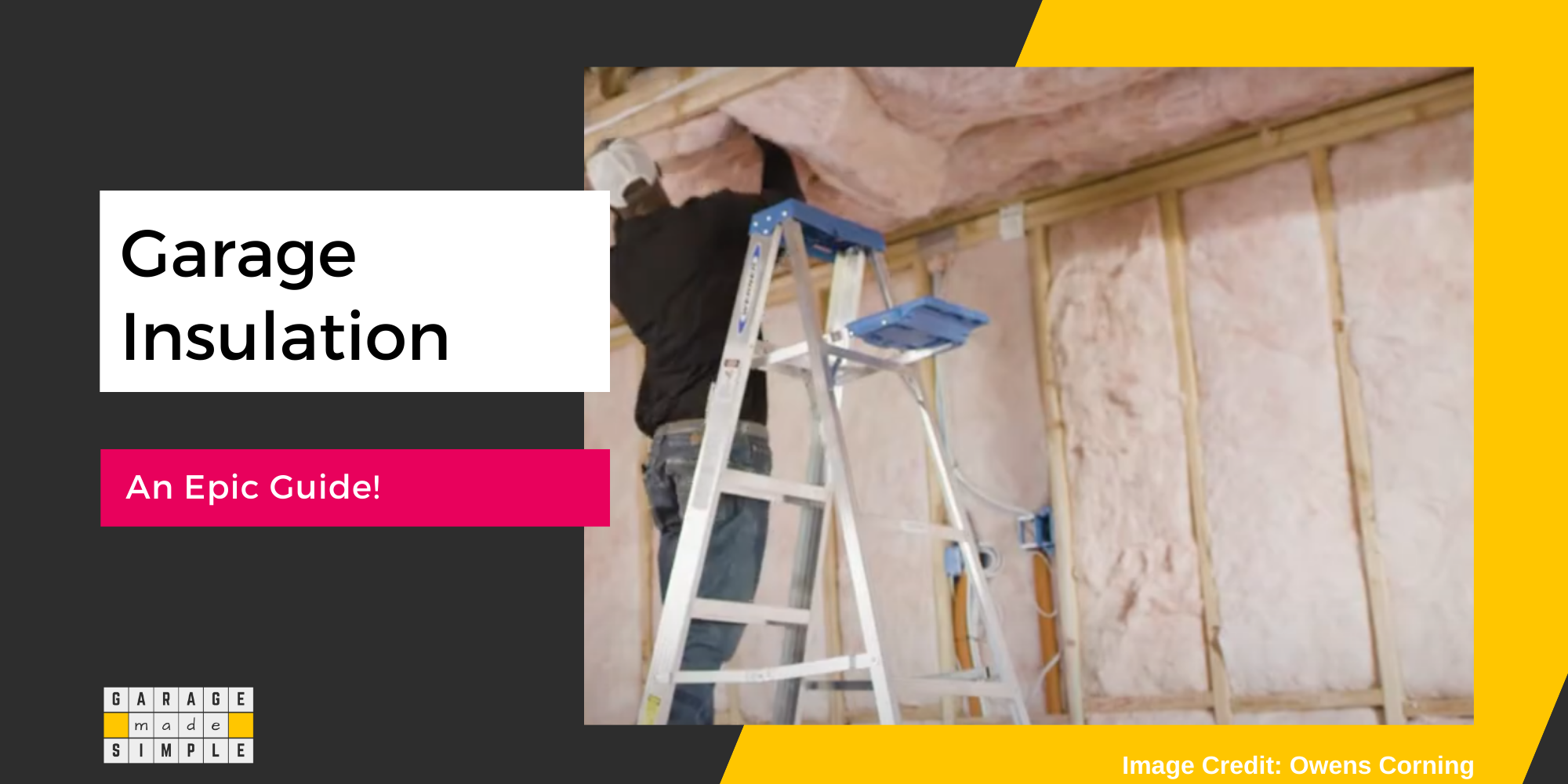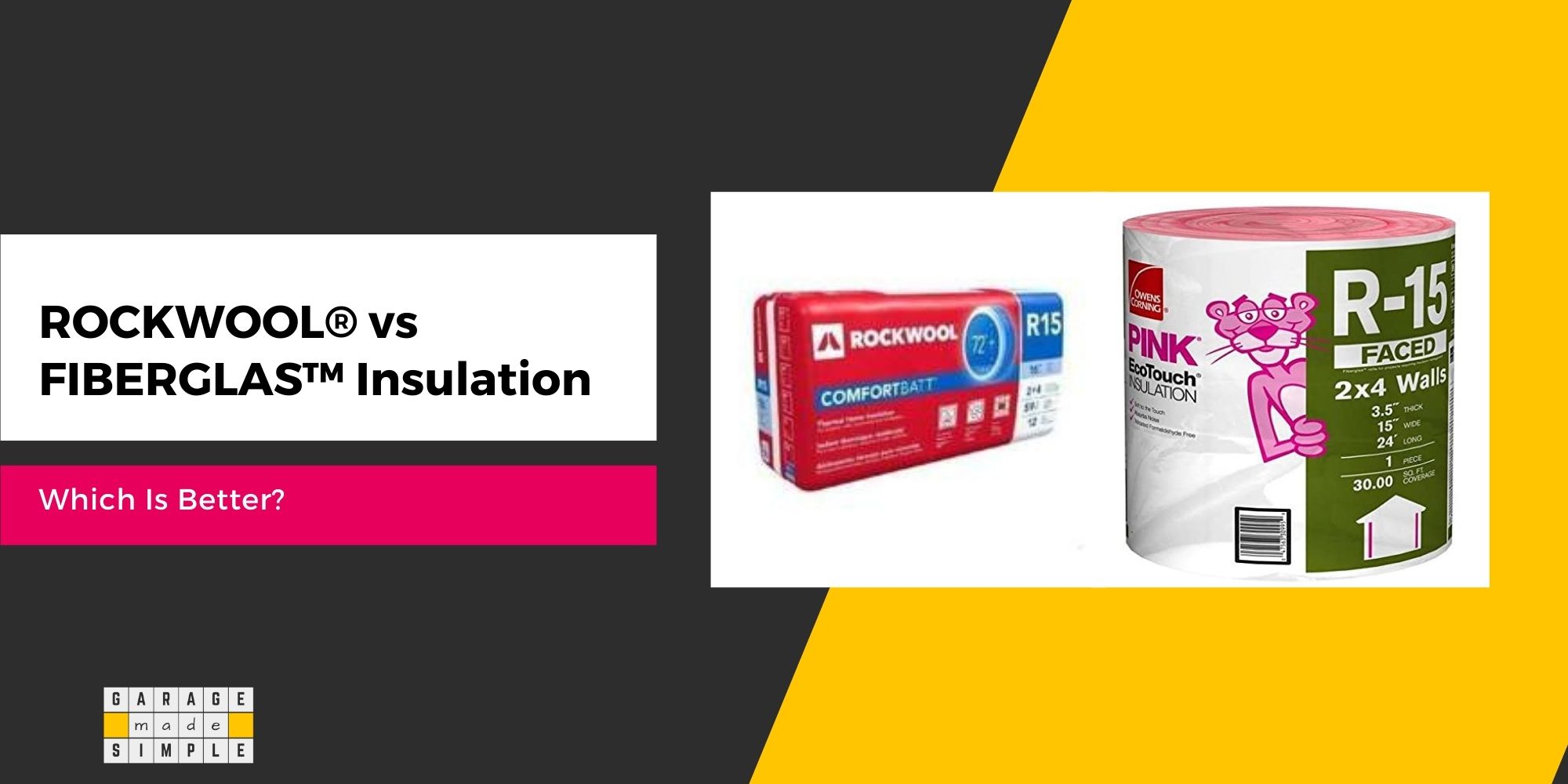R-Value For Garage Insulation: Comprehensive Guide
As an Amazon Associate, I earn from qualifying purchases.
You can not talk about insulation without talking about R-Value. So when it comes to insulating a garage you have to bring R-Value for Garage Insulation into the picture.
But what is R-Value for Garage Insulation? R-Value sounds like some technical mumbo-jumbo. The scientific definition is certainly not that easy to grasp. However, in layman’s terms,
R-value for Garage Insulation is a measure of the “resistance to heat flow”. The higher the R-value, the the greater the “resistance to heat flow” and the better the insulation.
Insulating a garage is not a luxury; it’s a necessity rooted in practicality and energy efficiency. Insulation is a key element of a garage climate control system.

Defining R-Value for Garage Insulation
In the context of thermal insulation, R-Value stands as a pivotal metric, quantifying a material’s resistance to heat flow. To comprehend its significance, consider the fundamental principles of heat transfer.
Heat transfer takes place from a zone of high temperature to a zone of low temperature through 3 physical processes.
- Conduction
- Convection
- Radiation
Conduction is the process when heat moves from the high-temperature zone to the low-temperature zone through the solid material between the two zones.
The R-value of a section, say a garage wall, is an inverse measure of the thermal conductivity of the section. A section with a high R-value has low thermal conductivity and hence better insulation properties.
Owens Corning R 15 Kraft Faced Fiberglass Batt Fits 2X4 Stud Walls
Owens Corning 678 SQFT 10 Bags of R 15 Kraft Faced 15 by 93 Fiberglass Batt Fits 2X4 Walls
Owens Corning EcoTouch PINK Fiberglass Insulation with PureFiber Technology is a preformed, flexible blanket insulation. It is produced in R-values from 11 to 49, with thicknesses ranging from 31/2 inches to 14 inches. It is available unfaced, or faced with either a kraft or foil vapor retarder.
As you can see the above insulation is clearly labeled as R-15, which is fairly good insulation for home and garage.
Convection is the process in which the air in contact with the high-temperature zone moves and takes the heat away to the low-temperature zone.
For example, the heat from the garage heater will be carried by the air in the garage to the colder areas of the garage, such as the garage wall. This is convection. The garage wall then dissipates the heat to the cold outdoors. This is conduction.
Radiation is the process when the heat moves from the high-temperature zone to the low-temperature zone through electromagnetic waves such as visible light, UV rays, and infrared rays.
The best example of heat transfer by radiation is the heat the earth gets from the sun. There is no conduction or convection involved. The heat transfers across vast empty space by radiation alone.
Heat loss due to radiation is not a factor when we talk about garage insulation. The most important factor is conduction. This is the reason we have to talk about R-Value when we talk about garage insulation.
Benefits of Garage Insulation
We all understand the need for and the benefits of insulation in our homes. Garage insulation brings similar benefits.
When combined with air sealing and attic insulation, garage insulation results in the following advantages.
Energy Efficiency and Reduced Waste
Garage insulation, in conjunction with air sealing and attic insulation, curbs energy waste in both summer and winter. This results in substantial savings on utility bills while ensuring a comfortable environment inside the garage.
Structural Integrity and Moisture Control
Proper insulation not only safeguards your cars and belongings stored in the garage but also protects the structural integrity of the garage.
Insulation helps reduce wild temperature variations and as a result, keeps humidity and condensation in control.
Improved Indoor Air Quality and Comfort
Garage insulation, when complemented by air sealing and good garage ventilation, fosters a healthier indoor environment.
By reducing drafts and maintaining stable temperatures, it enhances indoor air quality, creating a more comfortable living space throughout the year.
HVAC System Efficiency
An insulated attached garage, along with a well-sealed home, reduces the strain on the home HVAC system. This not only enhances its efficiency but also prolongs its lifespan, preventing it from becoming overworked and worn out prematurely.
Garage Door R-Value
The garage door R-Value plays a significant role in garage insulation as often, specially in attached garages, the garage door has a large exposure to the weather conditions.
New Garage Door
In case you are buying a new garage door then you have to consider the garage door R-value and factor it in your purchase decision. Garage Doors can come as:
Single Layer
A Single Layer Garage Door has just one layer of the garage door material, say steel. There is no insulation.
Double Layer
A Double-layer garage door has a layer of insulating material such as polystyrene foam board as a backing to the outer steel sheet. The foam board has a vinyl layer on the inner side of the garage door, which forms both a decorative and a protective layer.
Triple Layer
The Triple Layer is basically a double layer with an additional layer of steel sheet on the inside. This is obviously the best insulation you can get. This also makes the door very strong and durable.
Fortunately, most manufacturers give you several choices, which include non-insulated doors and doors with different degrees of insulation. The degree of insulation is indicated by the R-value of the garage door.
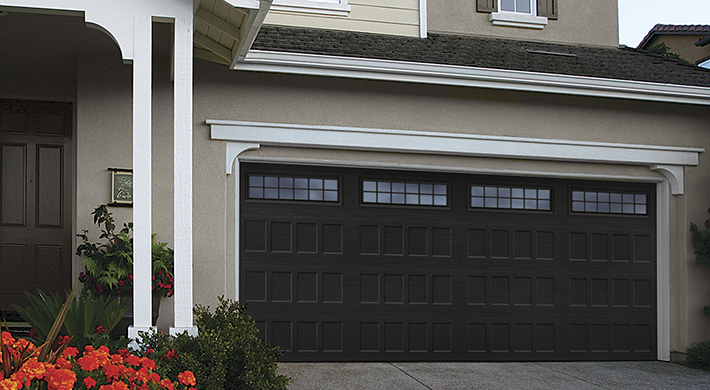
The Amarr Designer’s Choice – the ultimate protection. With triple-layer construction and superior insulation R-value of 13.35 or 19.40, these durable low-maintenance doors give you the ultimate in quiet operation and energy efficiency.
Existing Garage Door
On the other hand, you may want to add (or change) insulation on your existing non-insulated garage door. The easiest and the best way to do this is by using one of the garage door insulation kits available.
There are two popular garage door insulation kits.
Garage Door Insulation Kit (Bundle)
Garage Door Insulation Kit (Bundle)
Contains Matador Garage Door Insulation Kit (White) + Reach Barrier 3009 Kit (Silver)
Matador Garage Door Insulation Kit: The panels are made with the same OEM-grade product used by garage door manufacturers.
Reach Barrier Reflective Insulation And Bubble Barrier Technology Blocks Up To 95-Percent Of Radiant Heat.
The above uses panels made of Expanded Polystyrene (EPS) which can significantly reduce heat transfer by conduction. Matador Garage Door Insulation features an R-value of 4.8 at 75 degree Fahrenheit.
The second uses panels that are a lot more flexible. They are made by sandwiching fiberglass insulation wool within a tough, washable white vinyl facing on both sides. Owens Corning Garage Door Insulation Kit features an R-value of 8.
Owens Corning Garage Door Insulation Kit
Owens Corning Garage Door Insulation Kit
Owens Corning’s Garage Door Insulation Kit is a complete kit comprised of (8) durable R-8 fiberglass insulation panels with tough, washable white vinyl facing.
Each kit provides enough material to insulate a single car, garage door up to 9 feet wide x 7 feet 8 inches tall.
R-Value for Garage Walls
Insulating garage walls may not be on top of your mind when you think about insulating your garage. A lot of attention goes to insulating the garage door. It is understandable. A garage door is large (often 30% of the house frontage) and exposed to the elements.
However, the garage door is only one side of the garage. The walls are the other three sides. At least one, usually two (and all three in case of a detached garage) is exposed to the elements.
You need to insulate and therefore factor in R Value for garage walls in your insulation plans.
It is prudent to insulate all walls of a garage, even the ones that are adjacent to the home living space. You may use a lower R-value for insulation though. It will help reduce home energy costs and improve soundproofing.
Insulation Material for Walls
There are three commonly used materials and these are placed between the wall (brick, cinder block, or concrete slab) and the drywall or equivalent (cement block, plywood or OSB). These are:
Insulation Batts or Rolls
Insulation Batts can be made from any insulating material. Typically they use fiberglass but other types of material such as cellulose, mineral wool or natural fibers can also be used.
Standard fiberglass batts have R-values ranging from R-2.9 to R-3.8 for every inch of thickness.
Owens Corning R 15 Kraft Faced Fiberglass Batt Fits 2X4 Stud Walls
Owens Corning 678 SQFT 10 Bags of R 15 Kraft Faced 15 by 93 Fiberglass Batt Fits 2X4 Walls
Owens Corning EcoTouch PINK Fiberglass Insulation with PureFiber Technology is a preformed, flexible blanket insulation. It is produced in R-values from 11 to 49, with thicknesses ranging from 31/2 inches to 14 inches. It is available unfaced, or faced with either a kraft or foil vapor retarder.
Fire Resistant Rigid Foam Boards
Fire Resistant Rigid Foam Boards are rigid panels usually made out of
- Expanded Polystyrene (Styrofoam) – R-values that range from 3.6 to 4.2 per inch
- Extruded Polystyrene – R-values of around 5.0 per inch
- Polyisocyanurate – R-values that range from 6.0 to 6.5 per inch
For the best in this category check out ROCKWOOL COMFORTBATT. ROCKWOOL stone wool insulation comes in R13, R21, and R38 thermal values.
Spray Foam Insulation
Spray Foam Insulation is created by injecting two liquid chemicals from a spray gun which react to form a foam. The foam expands rapidly and will fill up every nook & cranny. It then hardens to create a very strong air barrier.
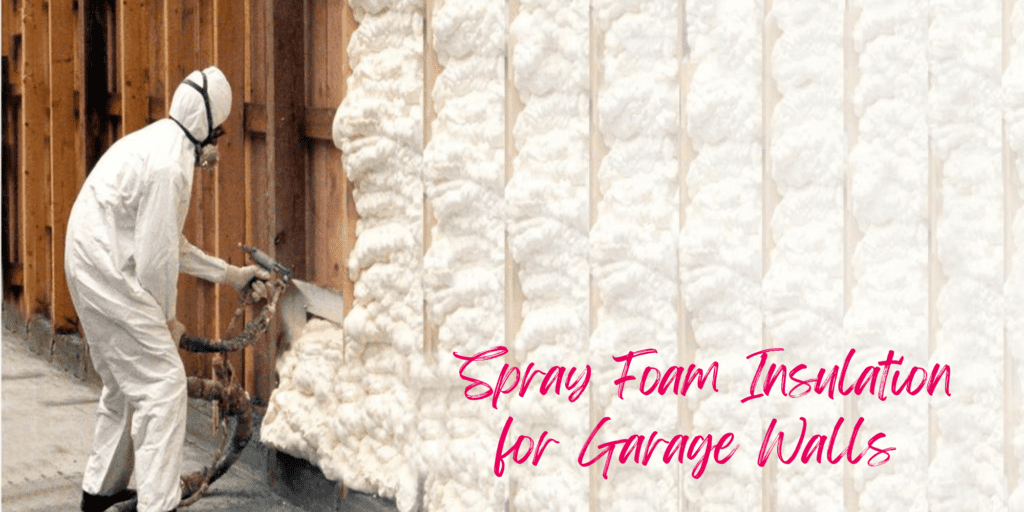
Spray Foam Insulation is extremely energy efficient. However, in my opinion, it is an overkill for a garage wall.
R-Value for Garage Floors
Even more than the Garage Walls, the Garage Floor gets totally neglected when it comes to garage insulation. But for a typical two-car garage, the floor is 27% of the total area of the six sides of the garage.
The garage floor is funneling the garage heat and your money, down into the cold, damp earth below every night.
Installation of an insulating subfloor is your solution. And, of course, you need to choose the material with the right R-value for the Garage Floor.
I recommend that you install DRICORE Subfloor R+ Insulated Panel, with Air Gap Technology from Amazon. They have an R-value of 1.4 which insulates and makes the garage floor feel warmer, There are some additional benefits too!
- Air Gap Technology helps protect against moisture, mold, mildew, and small water leaks
- Softens finished floors against hard concrete
- Strong enough to support up to 6,642 lbs. per sq. ft.
- Tongue and groove design makes installation fast and easy
R-Value for Garage Ceiling
Having come so far, you can not stop. You have to insulate the ceiling above your garage. In other words, you have to have a sufficiently high R-value for the garage ceiling as well.
And there is a good reason to do that too! So what happens to the warm air in your garage? Remember what the science teacher at school told you. Hot air moves up. That’s how hot air balloons work. Right?
Now let us say you have an attic above your garage. During winter your garage heater is busy heating up your garage. But unfortunately, a lot of the warm air is just going up and heating the attic. You do not want to waste your money heating an attic, if you just store some junk there!
On the other hand, if you are using the room above the garage as living space, that space is getting pretty warm in summer. The air conditioner in that room has to work extra hard to keep the room cool.
To cut the long story short, you should insulate the ceiling of your garage for complete garage insulation, especially if you want a climate controlled garage.
You can opt for one of the following insulation materials:
- Fiberglass Rolls
- Fiberglass Batts
- Blown-In Insulation
Attics require a very high R-value of insulation, so make sure you get enough thickness or layers.
What R-Value do I Need for my Garage?
To find out you must first determine the climate zone your home falls in using the map below:

Image
Source: Home Depot
Want to know even more? Then download this PDF from National Association of Home Builders (NAHB).
Thank you very much for reading the post. I do hope you found it informative and useful.





